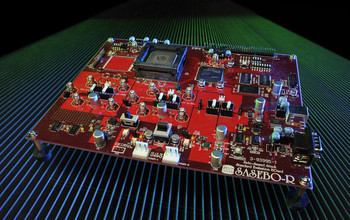Multimedia Gallery
A side-channel attack evaluation board (SASEBO) used for tamper resistance research.
Intentional fault injection into microprocessor hardware is an important threat to the embedded computers and microcontrollers that secure the nation's information technology infrastructure. Virginia Tech's FAME project develops a methodology to defend micro-controllers against malicious fault injection. The methodology is being validated with test chips which are subjected to an elaborate tamper-sensitivity analysis. The photo shows a test board used to support this analysis by enabling precise control of the operating conditions of the test chip.
Credit: Photo courtesy of Jim Stroup, Virginia Tech
Images credited to the National Science Foundation, a federal agency, are in the public domain. The images were created by employees of the United States Government as part of their official duties or prepared by contractors as "works for hire" for NSF. You may freely use NSF-credited images and, at your discretion, credit NSF with a "Courtesy: National Science Foundation" notation.
Additional information about general usage can be found in Conditions.
Also Available:
Download the high-resolution JPG version of the image. (237.9 KB)
Use your mouse to right-click (Mac users may need to Ctrl-click) the link above and choose the option that will save the file or target to your computer.
Related story: Protecting our processors



